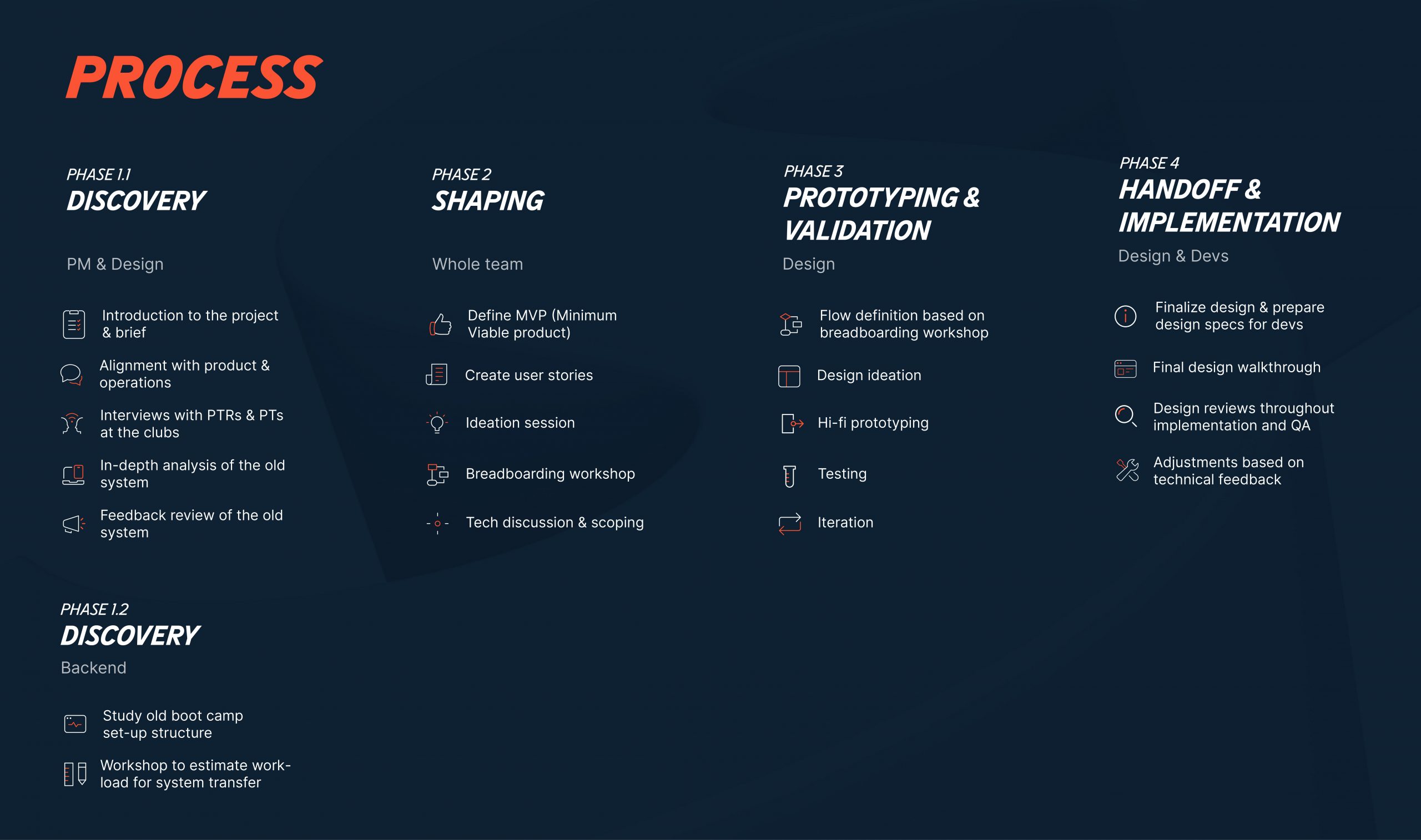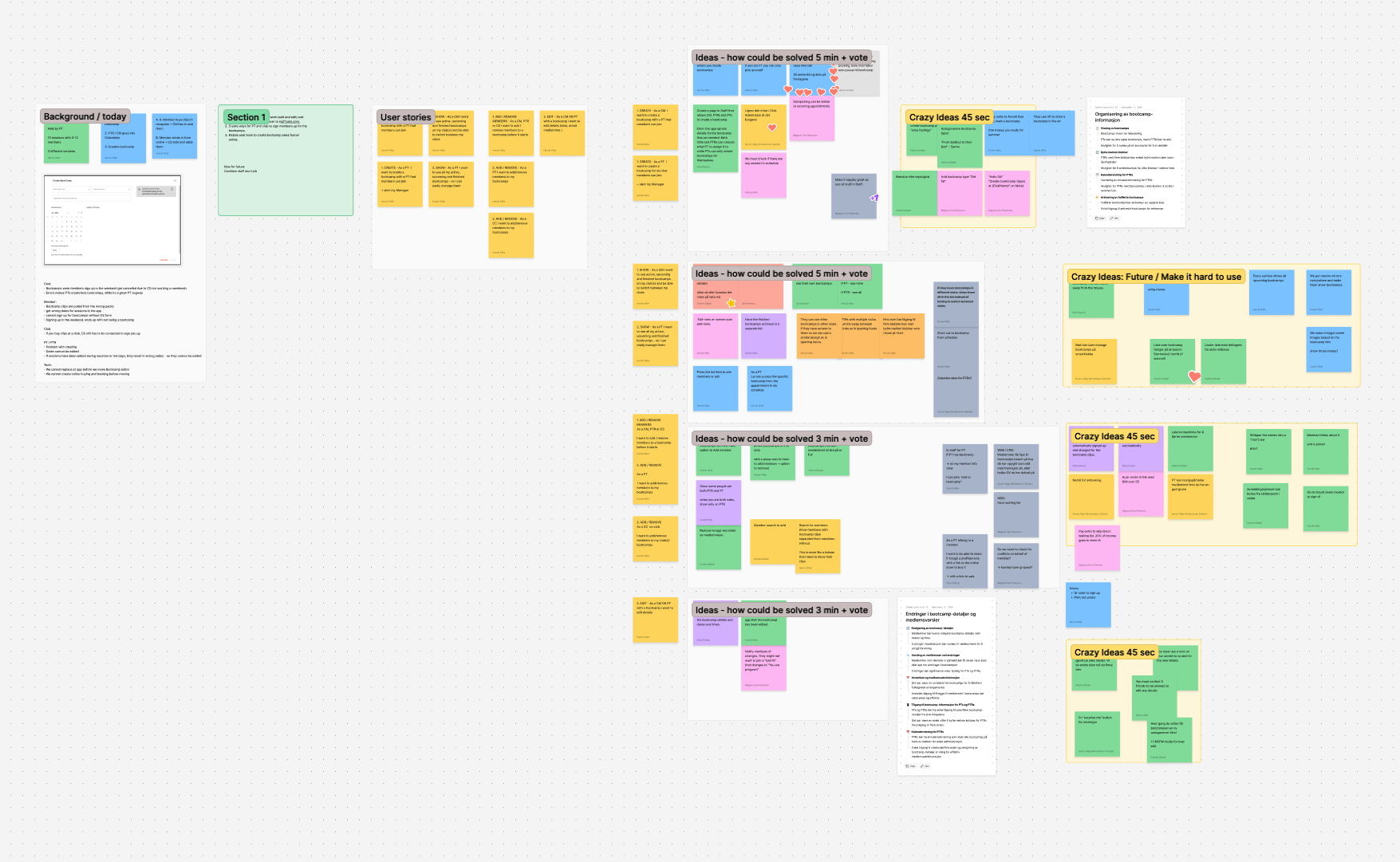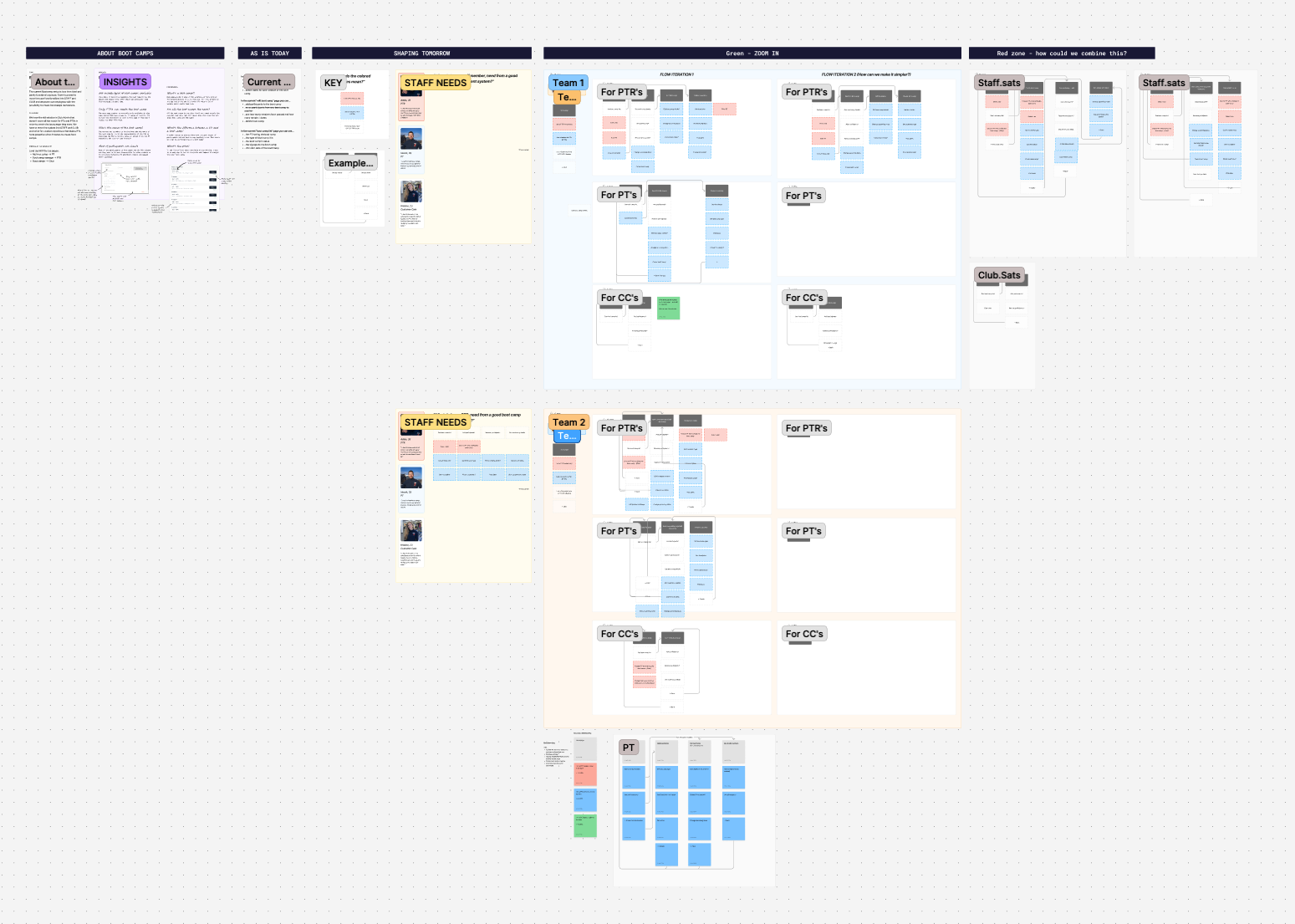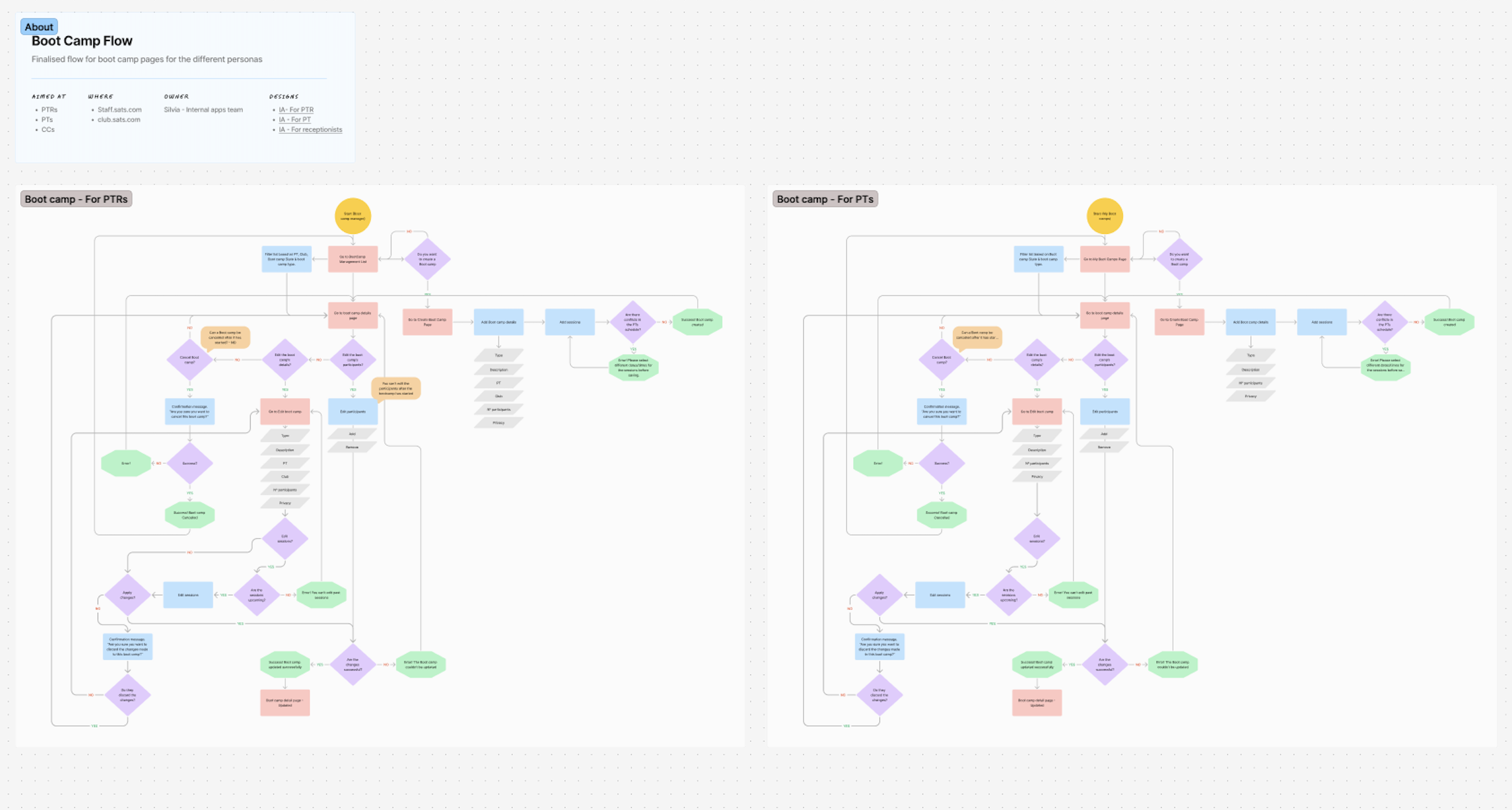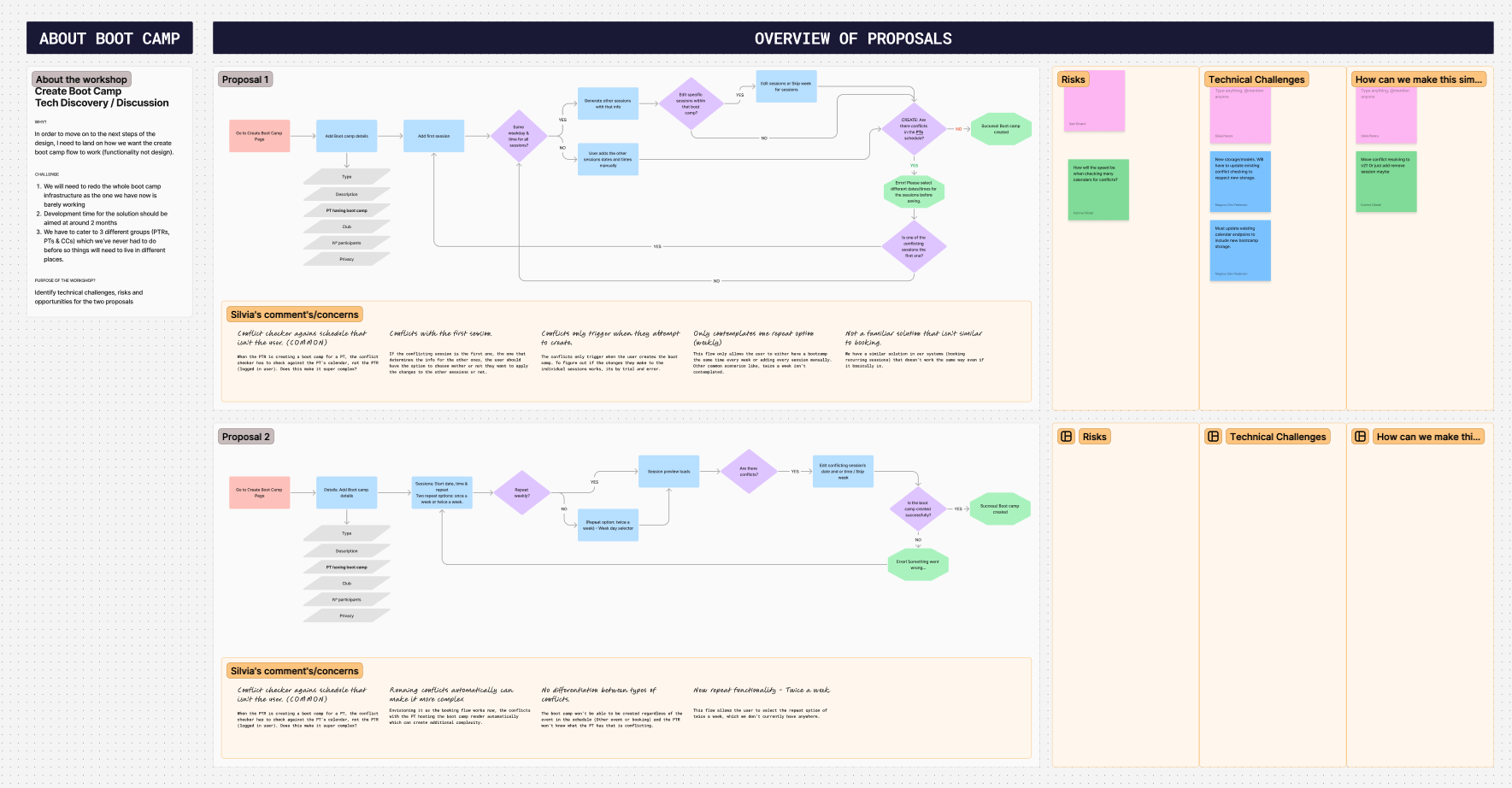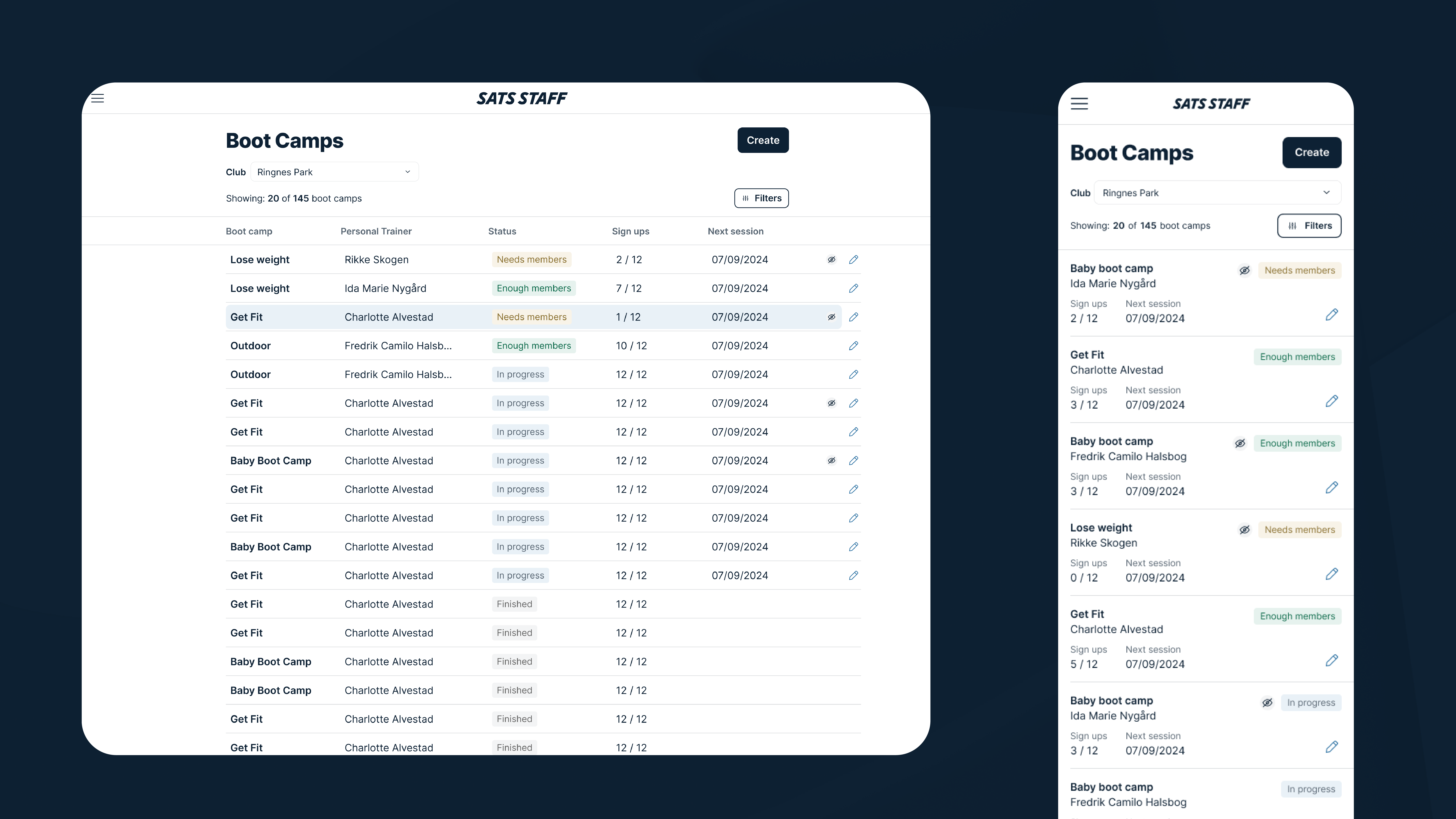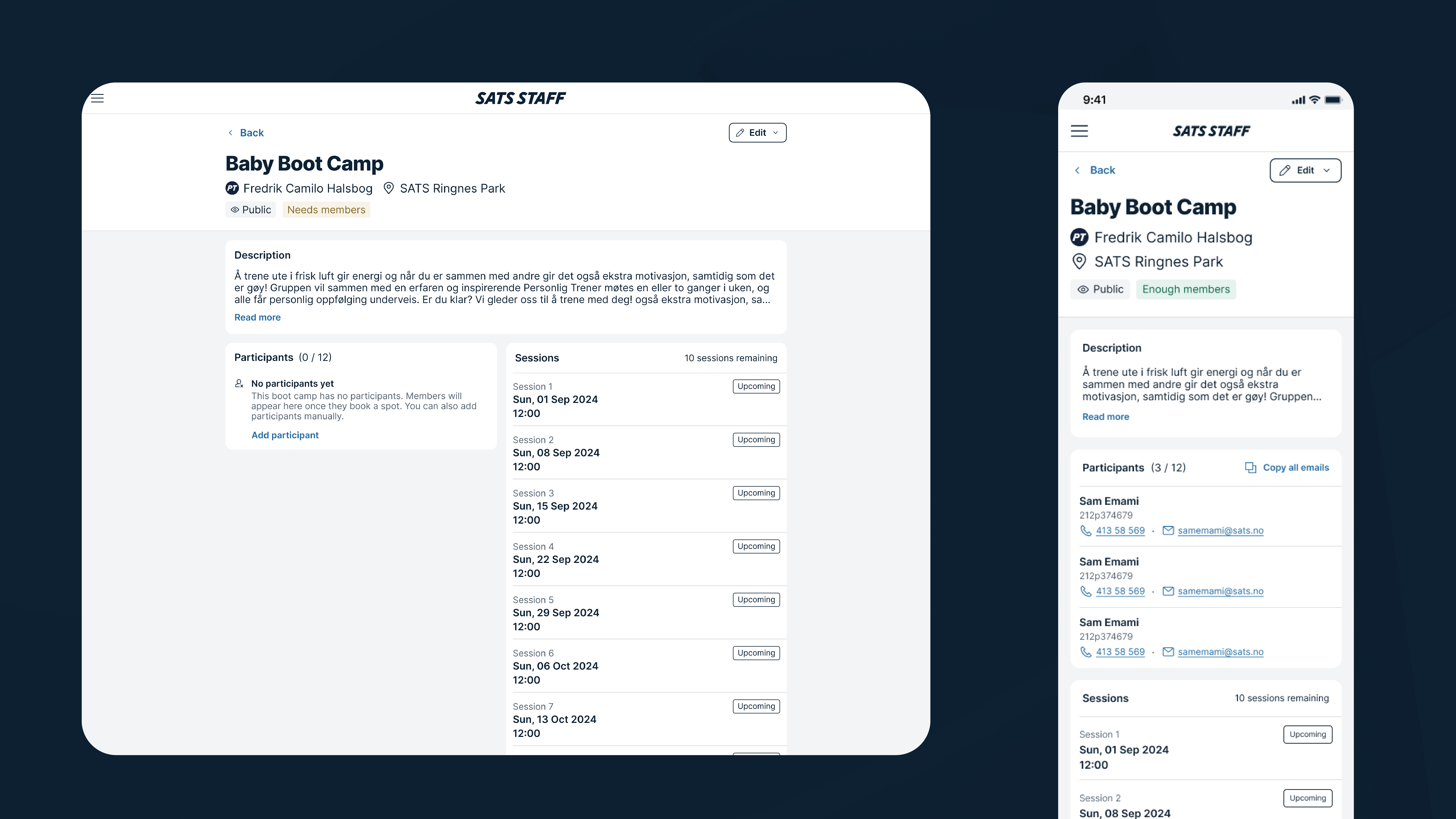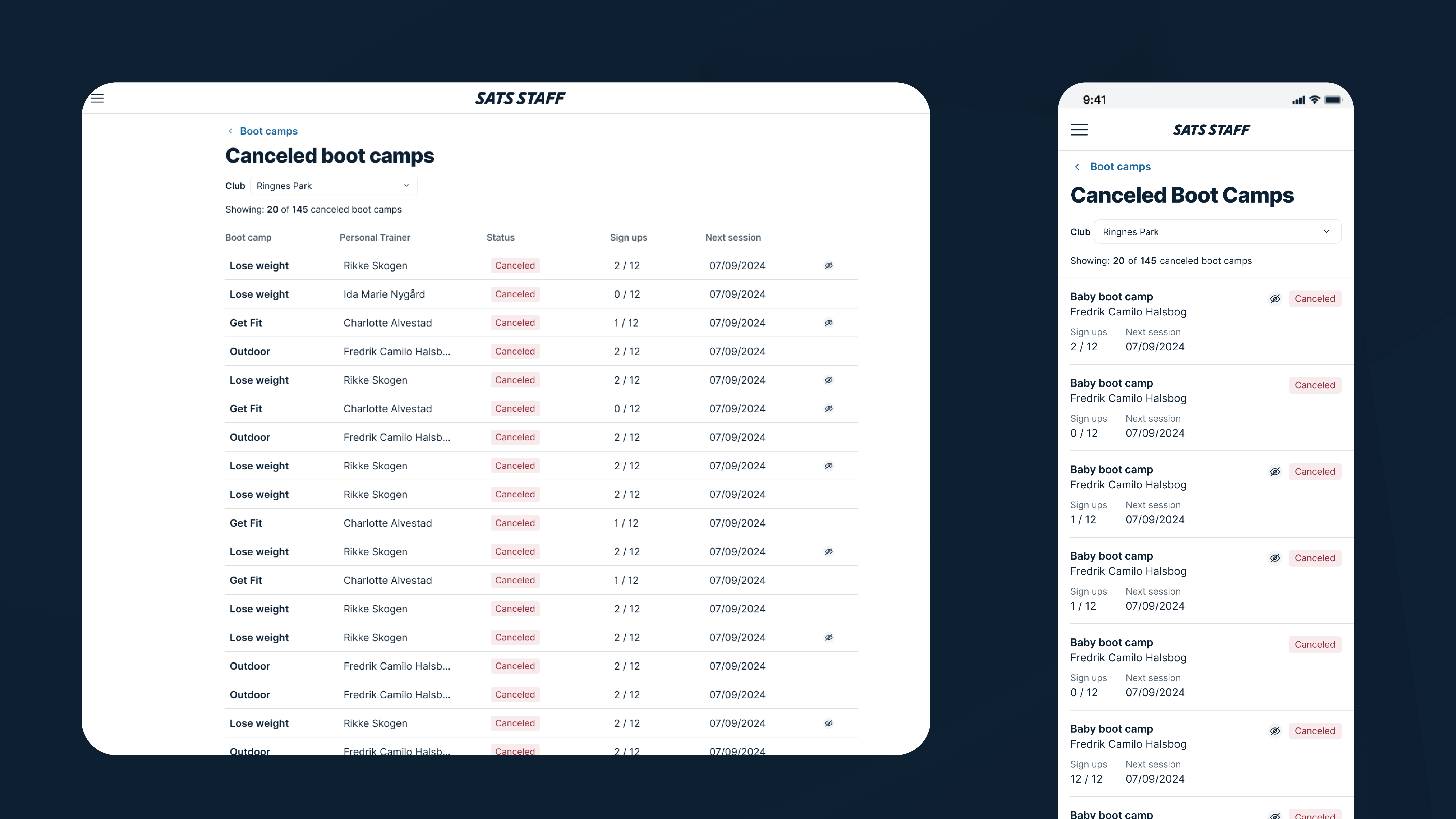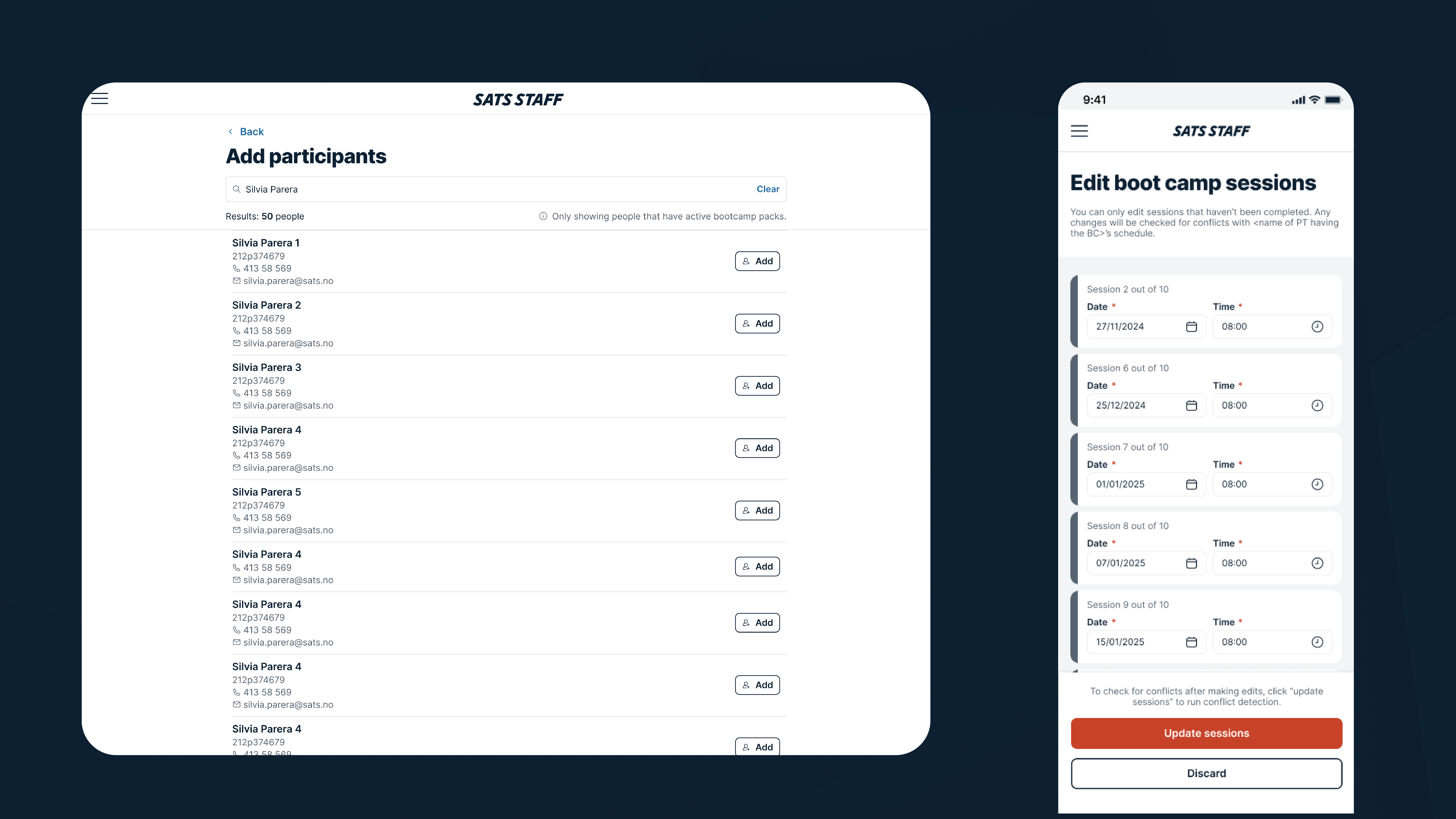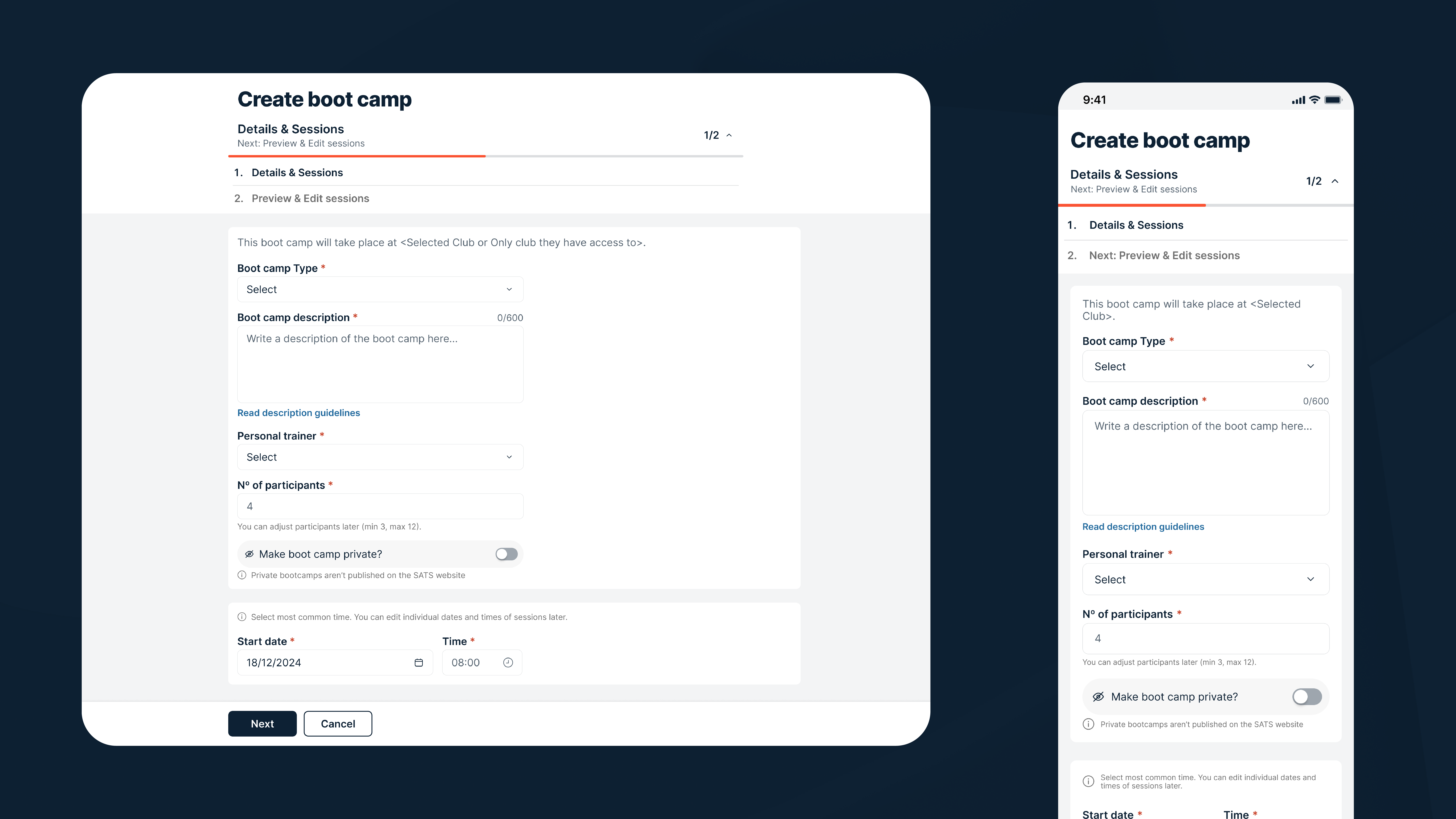
Boot Camp System
Role: Digital Product Designer
Team: PM, 2 front-enders, 2 back-enders, 1 designer
Timeline: Sept. 2024 – Now
Company: SATS Group
Personal Trainers (PTs) and PT Responsibles (PTRs) play a key role in delivering boot camps—small-group training programs designed to help members achieve results over ten weeks. However, the old system was inefficient, making boot camp creation and management cumbersome and time-consuming for trainers. As a result, very few boot camps were created, and even fewer actually took place.
Challenges:
The old system made boot camp creation and management inefficient, leading to several challenges:
- Restricted access: Only PTRs could create boot camps through the Club Admin page, limiting PT involvement.
- Scheduling conflicts: No integration with PT calendars, making it difficult to avoid overlapping sessions.
- Cluttered boot camp lists: Canceled boot camps (those with fewer than three participants) remained visible, making it hard to navigate active sessions.
- Lack of clarity in offerings: All boot camps had the same name, creating the impression they were identical, while their descriptions varied significantly, leading to confusion.
Research & Insights
METHODOLOGY
- Interviews with PTRs currently using the system
- Meetings with product and operations
- Workshops within the team & with PTRs
- Old system analysis
- Feedback gathered
- User testing sessions at clubs and online with PTRs and PTs
MAIN TAKEAWAYS
- Boot camp creation should be open to both PTRs and PTS:
- In most clubs, it is the PT themselves who decide they want to hold a boot camp yet the previous system only allowed PTRs to create them.
- PTs had to rely on PTRs for setup, causing unnecessary admin work.
- Scheduling Conflicts where a major issue, having PTRs to edit the created boot camps constantly.
- PTRs had no way to see conflicts between the boot camp sessions and the PT’s existing appointments with other clients.
- This resulted in constant back and forth between PTs and PTRs.
- The system was cluttered due to high cancelation rates
- There are a lot of boot camp that were being canceled due to low participation
- PTRs struggled to navigate the list of active vs. canceled boot camps.
- Lack of options and consistency on Boot Camp descriptions
- Since only 4 boot camp types exist, PTs often wrote custom descriptions to specify what their boot camp was about.
- However, that led to having very different styles of descriptions was there were no clear guidelines on what a description should contain.
- Furthermore, the previous system was highly limited in the number of characters allowed in the description which led to incomplete descriptions being added.
- Hard to understand the business rules due to a lack of explanations.
- Many rules determine who can be added or not to a boot camp, what you can edit when it comes to the boot camp, etc. which lead to a lot of confusion among users on why they couldn’t do certain things.
Solution & Design Decisions
1. PTRs & PTs can now create & manage bootcamps
- PTRs retain the ability to create boot camps for any PTs they manage and are able to see all the boot camps that are created in their club.
- PTs can now create boot camp for themselves and manage their own boot camps.
2. Decluttering Boot Camp list
- Canceled boot camps now move to a separate page keeping active boot camps organized.
- Future update: PTRs and PTs will be able to reactivate a canceled boot camp by selecting a new start date instead of recreating it from scratch)
3. Clearly stated business rules
The system enforces:
- Only active clip holders can be added to a boot camp
- No participant edits are allowed 24 hours before the boot camp starts.
- Boot Camps that are “In progress” can only edit upcoming or unprocessed sessions.
4. Expanded Boot Camp description Field and Guidelines
- More characters are allowed for detailed descriptions
- Standardized guidelines to ensure consistency across all trainers.
5. Built in Conflict checker
- Before creating a boot camp, PTs and PTRs see conflicts with the PT hosting the boot camp’s existing schedule. That prevents double bookings before they happen.
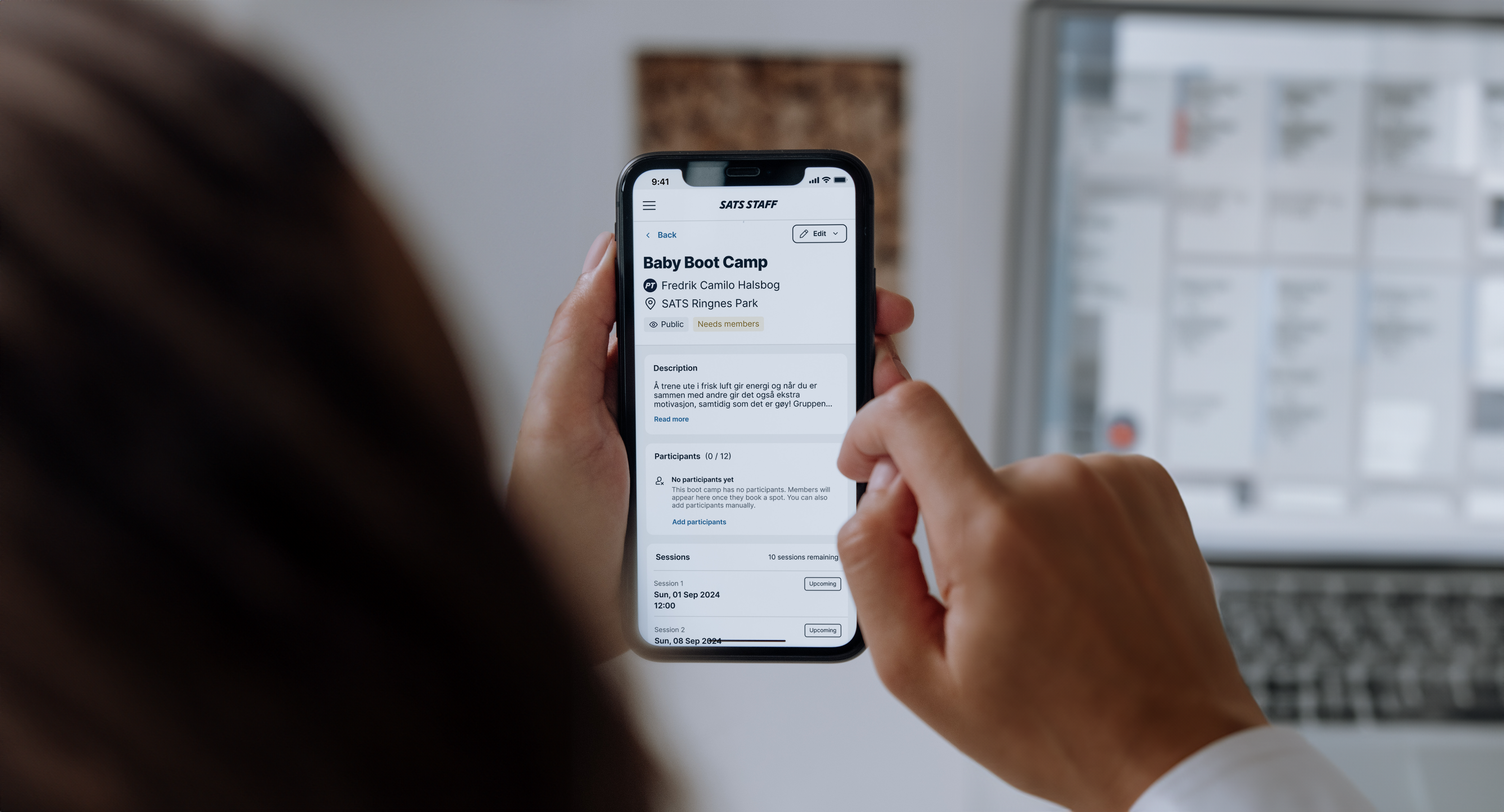
Impact & Results
📉 Reduced scheduling conflicts due to built-in conflict checker.
📌 More autonomy for PTs—no longer reliant on PTRs for boot camp creation.
🗂️ Cleaner system with canceled boot camps separated.
💡 More structured boot camp descriptions, making offerings clearer across clubs.
Reflection
This project highlighted the importance of balancing business needs, user experience, and technical feasibility. By involving PTs and PTRs early in the process, we uncovered key pain points that directly impacted the success of boot camps. Through iterative design and close collaboration with developers, we created a system that simplifies boot camp management, reduces scheduling conflicts, and provides more clarity for trainers.
While this was a significant step in improving the experience for PTs and PTRs, the next phase will focus on the member-side journey—ensuring a seamless experience from discovery to sign-up. Moving forward, I see opportunities to further optimize boot camp retention rates and refine the reactivation flow for canceled boot camps. This project reinforced the value of continuous iteration and user-centered design in solving complex internal workflows.


